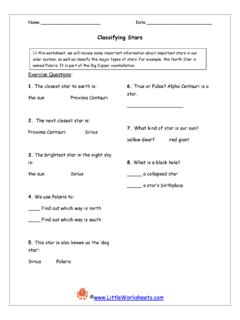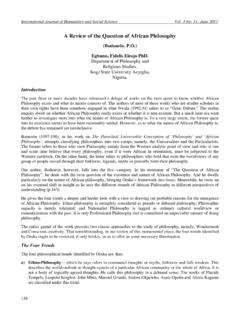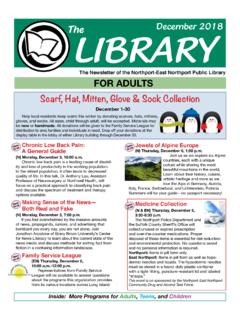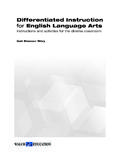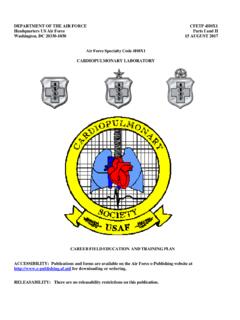Transcription of Practical Approaches to Teaching Sound and Light at KS2
1 Practical Approaches to Teaching Sound and Light at KS2. Welcome to the Crypt Teaching School training session. The focus of this session is on Practical (and hopefully enjoyable!). classroom activities for Teaching Sound and Light . I have not assumed previous subject knowledge or experience of Teaching the subject. This pack provides some student worksheets, and useful web links for teachers. I have included some level 4 science SAT questions. The last thirty minutes of the session will be a chance for delegates to discuss the activities and how they might fit into their school curriculum. Sound Topic (1) Sound is caused by vibrations. Explaining vibrations to the class using rulers and elastic bands. Bigger vibrations = greater noise.
2 Faster vibrations = higher pitch. (2) Sound travels through solids, liquids and gases. The power of the air-zooka Storytime: the humming railway tracks on a foggy morning. (3) Circus of activities what is causing the Sound ? What makes the Sound change? Tin can telephone Music box on and off a table Bottles with different amounts of water Guitar strings Bongo drums The slinky spring Light sabre Moo-boxes (4) Classifying cut and stick activity musical instruments (5) Science and Technology making your own musical instrument. (6) SATs questions Teaching Light (1) We see objects because (i) they emit Light or (ii) they reflect Light . The Light travels into our eyes. (2) Scientists discovered that Light travels in straight lines.
3 Using cardboard arrows and red wool to show the direction Light is travelling. (3) Shiny smooth objects reflect Light . Demonstration smooth tin foil has a mirror effect, rumpled tin foil doesn't. Student classroom investigation to classify objects. (4) Shadows are formed when Light is blocked by an object. Student investigation. (5) White Light is a mixture of different coloured Light . Rainbows form when sunlight is split. Student Practical , make a colour wheel. (6) Light travels in straight lines. Yr 6 Students make a periscope. (7) Level 4 SATS questions on Light . Sound and Vibrations Simple Definition of vibration : a continuous slight shaking movement : a series of small, fast movements back and forth or from side to side.
4 Science GCSE definition : a periodic motion of the particles of medium in alternately opposite directions from the position of equilibrium when that equilibrium has been disturbed (as when a stretched cord produces musical tones or molecules in the air transmit sounds to the ear). (Teacher training resource: Science Teaching alive 5 min youtube video Elastic Band Investigations Vary the tension Pitch of the twanging Sound Low tension Mid tension High tension Vary the thickness Pitch of the twanging Sound Small thickness Mid thickness Large thickness Vary the length Pitch of the twanging Sound Short length Mid length Long Length Air-Zooka Investigations Distance from Observations what you saw happened Correct? candle Close range Mid length Long Length Sound CIRCUS.)
5 Object Observation Wind-up music What happens to the volume when it is put on a box table? Why? Tin can telephone What happens to the volume when the tension in the string is high? Why? Moo boxes How do these make a Sound ? Water bottles Which water bottle has the highest pitch? Why? Bongos Will the large or small drum make the Sound with the greater volume? Light sabre Sound Travels When you bang a drum the vibrating drum makes the air near it _____. The vibrations in the _____ travel to the _____, and you hear the Sound . Sound cannot travel in _____ because there is no air for the vibrations to travel through. Space is a _____. That is why astronauts need to use _____ to talk to each other. Air is a _____. Sound can travel through gases.
6 Sound can also travel through _____ and _____. In air, Sound travels at _____ per second, but speeds up in water to _____ per second. Dolphins communicate with each other under the _____. The Sound can travel for hundreds of _____. Sound travels even more _____. through a solid metal than through the air or water. Standing near a railway line, a _____ from the rails can be heard several minutes before the train itself can be heard. Word bank: gas quickly vibrate liquids humming 340m space sea ears castanets guitar oboe harp cymbals sitar trumpet bagpipes drum flute glockenspiel banjo triangle violin saxophone Write the title and date then divide your page into three sections and label them: 1. These instruments make Sound by moving air.
7 2. These instruments make sounds by moving strings. 3. These instruments make sounds through something being hit. Muffling Sounds Investigation Some jobs require protective ear equipment to muffle or deaden Sound . Some materials are much better than others at muffling Sound . You are going to test a range of materials to see which seems to be best for this purpose. What will you measure? .. What equipment will you use? .. BEFORE YOU START. List the materials you will test in this table and then make a prediction of which you think will muffle the Sound best. Number them 1-4 with 1 being the best and 4 the least effective. Material Prediction Method Describe how you have set up the experiment and what you are doing.
8 Results Record your results in this table. Material Noise Level What can you say now about which materials are best at muffling Sound ? .. Practical Make a Musical Instrument resource/teachers-tv-investigating- Sound -6046748. SATS Questions Q1. Sounds Some children were playing musical instruments. (a) Give ONE way a drum makes a Sound when it is hit.. 1 mark (b) The windows were closed. The children working outside could still hear the Sound of the drums. The Sound reached these children's ears by travelling through the air and through the: .. 1 mark Q2. Sounds (a) Two girls put different amounts of coloured water in four bottles. They made sounds by blowing across the top of each bottle. When they blew, which bottle made the highest note?
9 Bottle .. made the highest note. 1 mark (b) The girl plucked an elastic band. It made a Sound . Explain why the elastic band made a Sound when it was plucked.. 1 mark Q3. Sounds (a) Ann clamped a ruler to a desk. She pressed down on the ruler and then let it go. Why was there a Sound when Ann let go of the ruler? .. 1 mark (b) Jack heard the Sound . What did the Sound travel through to reach Jack's ears? .. 1 mark (c) Ann shortened the length of the ruler sticking out from the desk. She let go of the ruler from the same position as before. Describe how the Sound was different.. 1 mark Teaching Light Yr 3 the sun is the main source of Light , Dark is the absence of Light The sun can damage your eyes. This educational charity website has full schemes of work.
10 - Good points lots of web-links and across-the curriculum Teaching ideas - Night Monkey, Day Monkey by Julia Donaldson, ISBN: The Owl who was Afraid of the Dark by Jill Tomlinson, or The Dark by Lemony Snicket, websites - - sources of Light sorting game -excellent short educational film - Drawbacks: - Introduces more complicated science content - refraction where Light bends). Some of the practicals will not work ( catching rainbows' in a glass of water or getting a diffraction pattern from a Perspex triangle). Example lesson plan: Whole class Teaching : Ask children to cover their eyes with cupped hands with fingers pressed close together & then slowly spread their fingers apart. What happened? Could they see their hands when their fingers were together?
